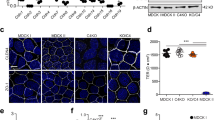Abstract.
This study focuses, in A6 cell monolayers, on the role of protein kinases in the dynamics of tight junction (TJ) opening and closing. The early events of TJ dynamics were evaluated by the fast Ca++-switch assay (FCSA), which consisted of opening the TJs by removing basolateral Ca++ (Ca++ bl), and closing them by returning Ca++ bl to normal values. Changes in TJ permeability can be reliably gauged through changes of transepithelial electrical conductance (G) determined in the absence of apical Na+. The FCSA allows the evaluation of the effects of drugs and procedures acting upon the mechanism controlling the TJs. The time courses of TJ opening and closing in response to the FCSA followed single-exponential time courses. A rise of apical Ca++ (Ca++ ap) causes a reduction of TJ opening rate in an FCSA or even a partial recuperation of G, an effect that is interpreted as mediated by Ca++ ap entering the open TJs. Protein kinase C (PKC) inhibition by H7 at low concentrations caused a reduction of the rate of junction opening in response to Ca++ bl removal, without affecting junction closing, indicating that PKC in this preparation is a key element in the control of TJ opening dynamics. H7 at 100 μm completely inhibits TJ opening in response to Ca++ bl withdrawal. Subsequent H7 removal caused a prompt inhibition release characterized by a sharp G increase, a process that can be halted again by H7 reintroduction into the bathing solution. Differently from the condition in which Ca++ is absent from the apical solution, in which H7 halts the process of G increase in response to a FCSA, when Ca++ is present in the apical solution, addition of H7 during G increase in an FCSA not only induces a halt of the G increase but causes a marked recuperation of the TJ seal, indicated by a drop of G, suggesting a cooperative effect of Ca++ and H7 on the TJ sealing process. Staurosporine, another PKC inhibitor, differently from H7, slowed both G increase and G decrease in an FCSA. Even at high concentrations (400 nm) staurosporine did not completely block the effect of Ca++ withdrawal. These discrepancies between H7 and staurosporine might result from distinct PKC isoforms participating in different steps of TJ dynamics, which might be differently affected by these inhibitors. Immunolocalizations of TJ proteins, carried out in conditions similar to the electrophysiological experiments, show a very nice correlation between ZO-1 and claudin-1 localizations and G alterations induced by Ca++ removal from the basolateral solution, both in the absence and presence of H7.
Similar content being viewed by others
Author information
Authors and Affiliations
Additional information
Received: 18 April 2001/Revised: 16 July 2001
Rights and permissions
About this article
Cite this article
Lacaz-Vieira, F., Jaeger, M. Protein Kinase Inhibitors and the Dynamics of Tight Junction Opening and Closing in A6 Cell Monolayers. J. Membrane Biol. 184, 185–196 (2001). https://doi.org/10.1007/s00232-001-0082-5
Issue Date:
DOI: https://doi.org/10.1007/s00232-001-0082-5




